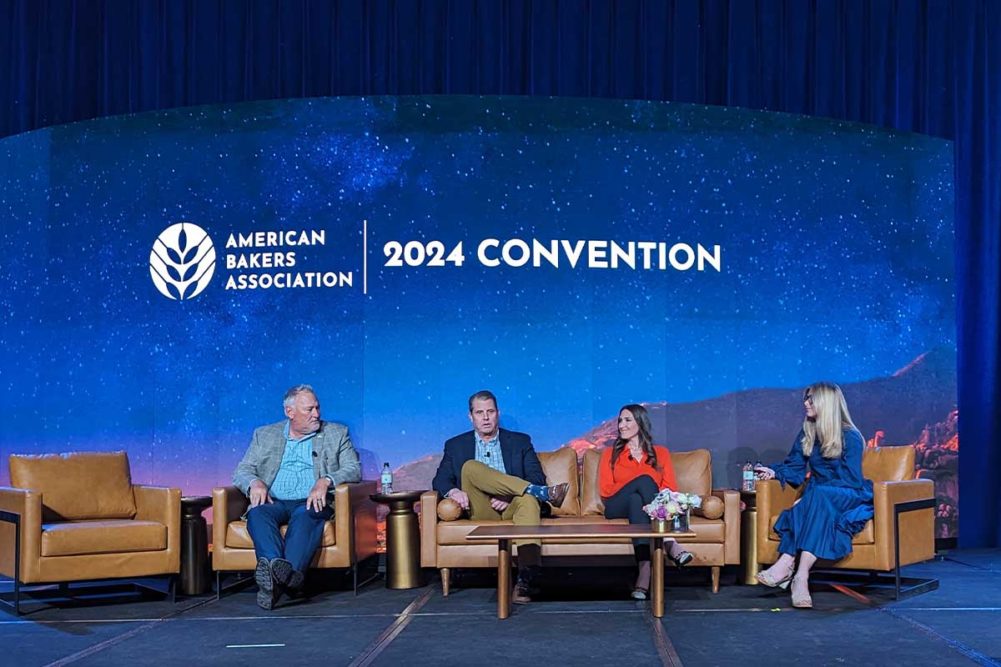SCOTTSDALE, ARIZ. — A major part of the American Bakers Association (ABA)’s five-year strategic plan is telling the stories of the good already being done by baking companies across the country. These stories about how baking companies are improving the environment and bettering their communities can help with workforce recruitment — another pillar in the strategic plan — as well as raise the profile of the baking industry in the eyes of consumers and policymakers.
At the ABA Convention, held April 13-17 in Scottsdale, Ariz., Bess Eastman, account director, Craft Media & Digital, moderated a panel representing baking industry companies who are not only doing good but telling that story as well. Beau Netzer, president of foodservice, Aspire Bakeries, Los Angeles; Heath Varnedoe, president and chief operating officer, Flowers Foods, Thomasville, Ga.; and Jaina Wald, vice president, marketing and digital, Puratos USA, offered up specific examples through ad campaigns, customer presentations, internal employee communications and social media that their companies have shared their sustainability and social responsibility progress.
“These are such great examples, and what I love about them is they’re all unique,” Eastman said. “There’s not a template for how you communicate and tell your stories. You’ve found creative ways to tell your stories and meet your audiences where they are.”
Wald pointed out how the baking industry has long been full of companies and individuals lifting up their communities, but the industry has historically kept this work out of the spotlight.
“We’re a humble industry, and we’re doing amazing work, but it’s hard to find an effective way to tell that story,” she said.
Telling that story can have a beneficial impact in a myriad of directions. On Capitol Hill, sharing the good work the baking industry is doing from an environmental impact, workforce or food insecurity can position baking companies as experts, shift perceptions and potentially impact policy direction. As today’s workforce and consumers look to work for and buy from companies that are doing good, promoting social responsibility efforts can raise a company’s profile in the eyes of both of these critical groups.
“The power starts with the connection you build with your local community,” Netzer said. “The more you reach out to your community, your workforce challenges will start to ease.”
For specific best practices when it comes to storytelling, Varnedoe recommended tapping into the emotional side of the work being done in bakeries. The bakery category is naturally tied to people’s emotional center and so are the uplifting stories Flowers has from its Second Chance Hiring program.
Netzer also noted that on social media the company’s Otis Spunkmeyer account resonates with consumers as a fun brand and one tied to their memories of eating cookies when they were a student. That connection is a powerful one that can be tapped into when telling a story. Netzer also recommended letting the company’s employees tell the stories.
Wald agreed, encouraging companies to center their storytelling on their people. She encouraged companies to find employees who are already ambassadors for the brand and provide them a platform to share the message.
“People trust people,” she said. “They don’t really trust brands. Of all the content we post, the ones that perform really well are the people-focused stories every time.”
Digital media, in particular, Wald said, allows companies to experiment more, though it requires an extremely agile communications team.





